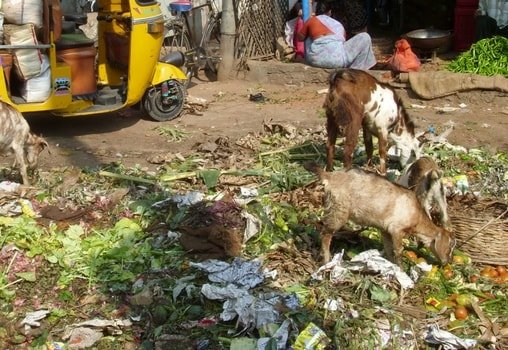Out of the 17 Sustainable Development Goals for 2030, ‘end poverty in all its forms everywhere‘ occupies the first position – and rightly so. According to the recent data by the World Bank, extreme poverty affects around 11% of the world’s population, that is, 767 million people are estimated to live on less than $1.90 per day. This is a rather conservative estimate of poverty. Other estimates like the Multi-Dimensional Poverty Index peg the figure at 30% of the world’s population (in 102 countries covered).
The huge number of people living under poverty is appalling to say the least. The cascading impact of poverty is both direct and indirect – encompassing hunger, malnutrition, health, sanitation, etc. There is a vicious cycle of poverty where it impacts all aspects of a person’s life. Conversely, other aspects like diseases push these people again into poverty. It thus becomes a self-fuelling vicious cycle.
In recent years, it has been seen that the problem of poverty stems from the allocation and distribution of resources. In the second populous country of the world, India, around 40% of food is wasted. Instead, if this was made available to the poor at a cheaper rate, the problems of hunger, nutrition and ill-health could be curbed – thus indirectly impacting poverty.
A large part of the problem can be solved by an effective and efficient supply chain network. It will help reach the target population in a better way. With the use of information and communication technology along with the use of novel techniques like artificial intelligence, the whole network can be managed in a better way. A case in point is the Electronic Vaccine Intelligence Network by the United Nations Development Programme (UNDP) and the Government of India. It helps in the planning, procurement and distribution of vaccines across India. This obliterates the problem of stock-outs at district health centres along with problems of over-stocking, inventory management, network planning, network optimisation and wastage due to the expiry of vaccines.
To target the multiple aspects of hunger (which manifests into/from poverty), a robust supply chain network could be used. According to the estimates of the Food and Agricultural Organisation (FAO), roughly one-third of the total food produced for human consumption gets lost or wasted. This is enough to feed people and solve the global food crisis with the help of an efficient supply chain.
At the onset, investments need to be made in the infrastructure sector, and this includes the building of warehouses in a scientific manner, which can store perishable and non-perishable items. After this, an efficient supply chain needs to be built with the help of a sophisticated transport system which provides facilities like cold-chain management. This supply chain has to designed so that the network is optimised – ultimately leading to cost savings, reduced greenhouse gas emissions, and a faster turnaround time.
At the backbone of any modern day supply chain lies an information and communication technology platform which helps in monitoring, controlling and decontrolling the supply chain. The information technology (IT) platform can help give a bird’s eye view of the whole supply chain and can help us in efficient management. The IT system may be a simple low-tech solution which just performs inwarding, outwarding and inventory management. This would help curb the problems of pilferage, theft and corruption along with stock-outs.
On the other hand, a sophisticated system with artificial intelligence can help make an automated supply chain – which will give information about inventory, track the goods en-route, use analytics to suggest the best route, help curb greenhouse gas emissions by reducing wastage and optimise the network, along with a plethora of other benefits.
To start with, governments can focus on building basic infrastructure like warehouses, cold storage houses and other facilities. These can be slowly ramped up along with the use of IT at every step. The solution requires tweaking according to the local conditions.
Today, the human race is at a great juncture where it will leap from the past era where hunger, malnutrition, war, diseases, etc. were common, to an era of scientific development where humans have infinite potential. To reap the benefits of this potential, we must take necessary steps so that no one is left behind.
We must remember the words of Mahatma Gandhi who told us to think about the ‘last man’ in the chain, and whether our steps are going to benefit them. Indeed, we are on the right path – and with sustained efforts, we will surely create a world where no one is left behind.
_
Featured image used for representative purposes only.
